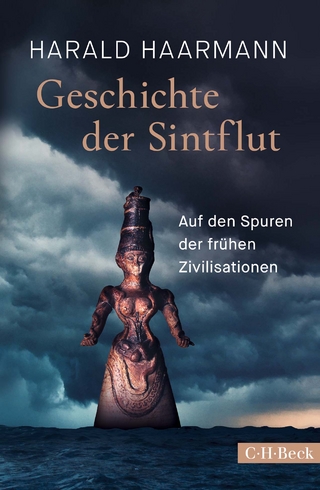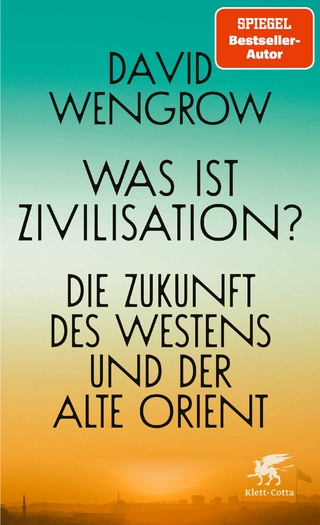
Palaeolithic Italy
Sidestone Press (Verlag)
978-90-8890-584-1 (ISBN)
The picture of the Palaeolithic adaptations in the Italian Peninsula has always been coarse-grained compared to various well-researched regional hotspots in central and western Europe, as a result of historical research bias preventing the application of new research methodologies. Nonetheless, discoveries regarding Neanderthal extinction and behavioural complexity, the dispersal of Anatomically Modern Humans as well as the origin and diffusion of modern technologies and symbolic behaviour in Europe have brought Italy into focus as an ideal region for understanding the evolutionary development of various hominin species that inhabited the continent in the Late Pleistocene. In particular the dynamics of the earliest human peopling of Europe, the reasons and timing of Neanderthals demise and how environmental factors affected human prehistoric behaviour, rates of technological innovation and connectivity of hunter-gatherer groups in Europe.
The edited volume “Palaeolithic Italy” aims to contribute to our better understanding of the previous, still open, research questions. This will be achieved by presenting the latest advances in Palaeolithic research in Italy due to the application of a variety of modern analytical methods and cutting-edge techniques when studying numerous collections of materials from both old and new excavations as well as the latest results of field research in the country. The volume is intended for the international academia, representing a key reference for all archaeologists and readers interested in Early Prehistory of the Mediterranean region.
Dr Valentina Borgia is a researcher affiliated to the McDonald Institute for Archaeological Research (University of Cambridge). She received her PhD in Prehistory at the University of Siena (Italy). Her scientific background encompasses a range of topics that span from lithic and bone tools technology to Palaeolithic population subsistence economy and prehistoric art; nevertheless the study of hunting weapons has been the focal point of her research. In 2013 she was granted a Marie Curie Intra EF fellowship at the University of Cambridge to work on the operative chains of hunting weapons, and their importance as key factor in the dominance of Anatomically Modern Humans. Her approach to the complexity of prehistoric hunting strategies is multidisciplinary, and combines typological and technological data with functional and residues analysis. She has written numerous scientific papers and a condensed book of History for high school students. She has wide experience on outreach activities and has founded and directed the cultural association ‘Silex’ created to introduce children to Prehistory. Borgia, V., Boschin, F., & Ronchitelli, A. (2016). Bone and antler working at Grotta Paglicci (Rignano Garganico, Foggia, southern Italy). Quaternary International, 403, 23-39. Borgia, V., Carlin, M. G., & Crezzini, J. (2017). Poison, plants and Palaeolithic hunters. An analytical method to investigate the presence of plant poison on archaeological artefacts. Quaternary International, 427, 94-103. Dr Emanuela Cristiani is an Associate Professor in Prehistory at Sapienza University of Rome and she is director of the Ancient Diet and Technology Laboratory at the Department of Oral and Maxillo Facial Sciences. She received her PhD in Prehistoric Archaeology at Sapienza University in 2010 and in the same year she became a Wenner Gren grantee. In 2011 she started a Marie Curie Intra European fellowship at the McDonald Institute for Archaeological Research (University of Cambridge) in order to study Mesolithic and Neolithic technological, functional and symbolic strategies related to the use of organic tools and ornaments in the Balkan region. In 2014 she was invited to become a fellow of the Italian Academy for Advance Studies in America (Columbia University in New York) where she investigated the emergence of symbolic behaviour in prehistoric human societies. In 2014 Dr Cristiani was awarded an ERC Starting grant for the project “HIDDEN FOODS. Plant foods in Palaeolithic and Mesolithic societies of south-eastern Europe and Italy”. Dr Cristiani’s special research interest is the study of forager societies of southern Europe and the characterization of their identities, cultural traditions and dietary strategies through the study of the techno-functional choices connected with the production and use of material culture (knapped and ground stone tools, osseous artefacts and ornaments). She is specialist of the use-wear and residue analysis on organic and inorganic artefacts. She published more than 40 articles in international peer-review journals such as PNAS, Journal of Human Evolution, Scientific Reports, Journal of Archaeological Sciences and Quaternary International. Cristiani, E., Radini, A., Edinborough, M., & Borić, D. (2016). Dental calculus reveals Mesolithic foragers in the Balkans consumed domesticated plant foods. Proceedings of the National Academy of Sciences, 113(37), 10298-10303. Cristiani, E., & Borić, D. (2016). Mesolithic harpoons from Odmut, Montenegro: Chronological, contextual, and techno-functional analyses. Quaternary International, 423, 166-192.
Foreword: Graeme Barker
Introduction: Valentina Borgia and Emanuela Cristiani
The Italian case in the context of the first European peopling
Marta Arzarello
Small Tools and the Palaeoloxodon- Homo interaction in the Lower Palaeolithic: the contribution of use-wear analysis
Cristina Lemorini
Blade and bladelet reduction systems in the Italian Middle Paleolithic. The case of Grotta del Cavallo, (Nardò – Lecce)
Leonardo Carmignani, Lucia Sarti
The Lower Tyrrhenian Versant: was it a techno-cultural area during the Middle Palaeolithic? Evolution of the lithic industries of the Riparo del Molare sequence in the frame of Neanderthal peopling dynamics in Italy
Daniele Aureli, Annamaria Ronchitelli
Neanderthal mobility pattern and technological organization in the Salento (Apulia, Italy)
Enza Spinapolice
The socio-economic significance of Neanderthal shell technology: A new perspective on Middle Palaeolithic adaptation to intertidal zones from disregarded tools
Francesca Romagnoli
The Middle-Upper Paleolithic Transition interpreted through the Italian human remains
Stefano Benazzi
From Neanderthals to Anatomically Modern Humans in Liguria (Italy): the current state of knowledge
Fabio Negrino, Julien Riel-Salvatore
Human exploitation of avifauna during the Italian Middle and Upper Paleolithic
Monica Gala, Ivana Fiore, Antonio Tagliacozzo
Lithic raw material circulation and settlement dynamics in the Upper Palaeolithic of the Venetian Prealps (NE Italy). A key-role for palaeoclimatic and landscape changes across the LGM?
Stefano Bertola, Federica Fontana, Davide Visentin
Laminar tools with sinuous profile from Grotta Continenza (Trasacco – AQ, Italy): a specialized production from the Late Epigravettian levels
Marco Serradimigni
An overview of early Epigravettian lithic technology of the western Adriatic area
Emanuele Cancellieri
Re-colonising the Southern Alpine fringe: diachronic data on the use of sheltered space in the Late Epigravettian site of Riparo Tagliente (Verona, Italy)
Federica Fontana, Laura Falceri, Alessia Gajardo, Stefano Bertola, Maria Giovanna Cremona, Fabio Cavulli, Antonio Guerreschi, Davide Visentin.
Epigravettian osseous technology from the eastern Alpine region of Italy. The case of Riparo Dalmeri (Trentino)
Emanuela Cristiani
Recent excavations and new insights into complex final Epigravettian funerary ritual at Caverna delle Arene Candide (Liguria)
Julien Riel Salvatore, Claudine Gravel-Miguel, Roberto Maggi, Gabriele Martino, Stefano Rossi, Vitale Stefano Sparacello.
Changing mobility patterns at the Pleistocene-Holocene transition: lower limb biomechanics of Italian Gravettian and Mesolithic individuals
Vitale Sparacello, Sebastien Villotte, Colin Shaw, Federica Fontana, Elisabetta Mottes, Elisabetta Starnini, Giampaolo Dalmeri, Damiano Marchi.
The role of aquatic resources in ‘Italian’ hunter-gatherer subsistence and diets
Marcello Mannino, Michael Richards
Afterword: Carlo Peretto
| Erscheinungsdatum | 09.09.2018 |
|---|---|
| Zusatzinfo | 47fc / 56bw |
| Verlagsort | Leiden |
| Sprache | englisch |
| Maße | 182 x 257 mm |
| Themenwelt | Geisteswissenschaften ► Archäologie |
| Geschichte ► Allgemeine Geschichte ► Vor- und Frühgeschichte | |
| Naturwissenschaften ► Biologie ► Humanbiologie | |
| ISBN-10 | 90-8890-584-3 / 9088905843 |
| ISBN-13 | 978-90-8890-584-1 / 9789088905841 |
| Zustand | Neuware |
| Haben Sie eine Frage zum Produkt? |
aus dem Bereich


